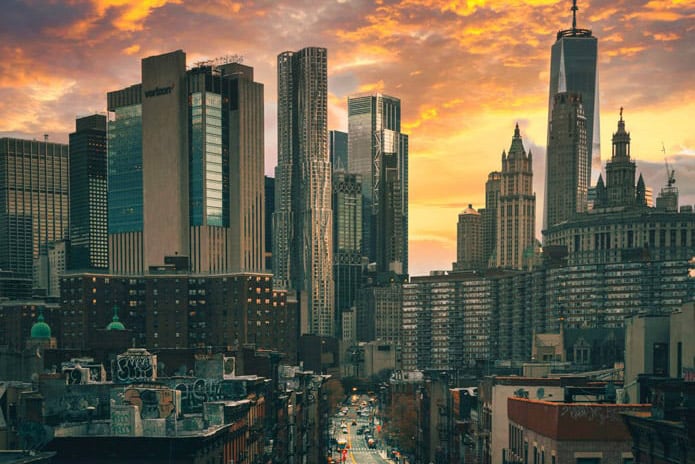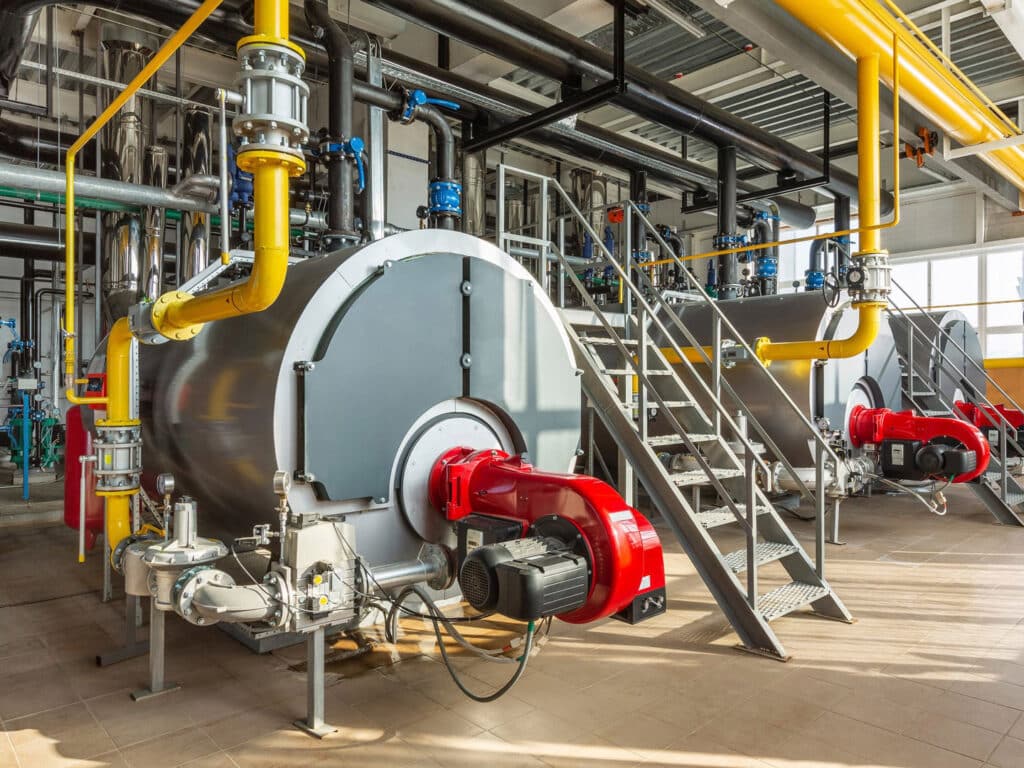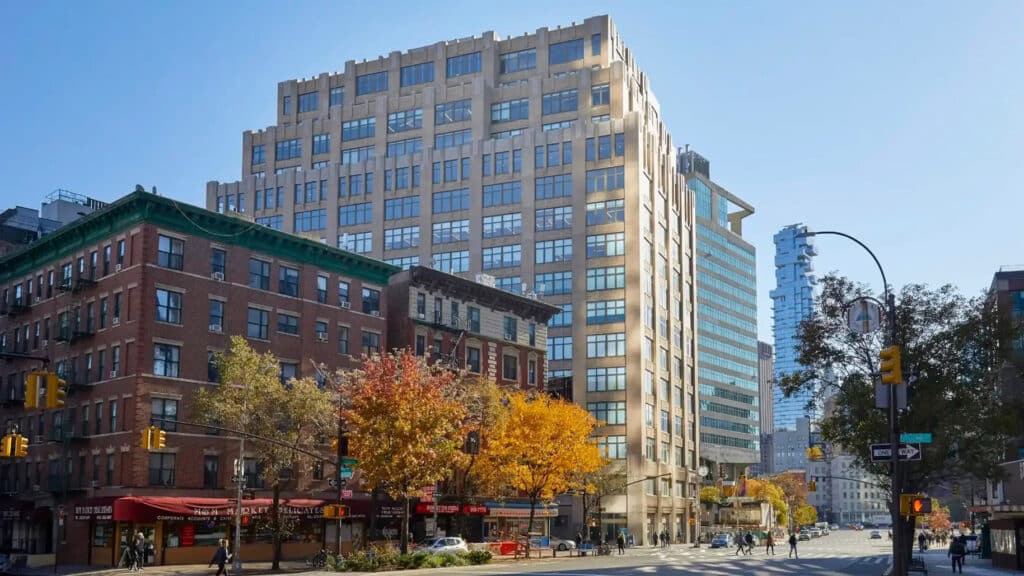
New York’s Local Law 97
New York City’s Green Energy Local Law 97 (LL97) is a significant component of the Climate Mobilization Act passed by the New York City Council in 2019. The New York City Mayor’s Office of Climate and Sustainability presents this law as “one of the most ambitious plans for reducing emissions in the nation.”
One of the controversial components of the new law is its focus on the consumption of carbon-producing energy by buildings, which reportedly account for 70% of all greenhouse gas (GHG) emissions. This is a claim that can certainly be challenged because existing buildings do not directly emit GHG. It’s the production of the energy for tenants to heat, cool and light spaces that emits hazardous gases.
The law imposes strict limits on the consumption of energy within each building and levies a fee on landlords proportionate to any amount by which these limits are surpassed. This article describes the characteristics of LL97 so that professionals can determine if this regulation is an effective way to improve atmospheric conditions and potentially save lives and serve as a model for other jurisdictions or if it is a very expensive way to mask a city tax.
The goal
Ultimately, LL97 attempts to reduce emissions of buildings covered by the law 40% by 2030 and to net zero by 2050. If effective, it could serve as a blueprint for those who seek to create a sustainable urban landscape. Similar laws have been implemented by other U.S. cities, including Boston, Seattle and Washington, D.C. If these efforts deliver a noticeable reduction in GHG and are deemed an efficient use of societal capital, they could serve as a road map for similar regulations in more cities.
New York laws already require building owners to benchmark their energy and water consumption annually, file a compliance report with the city and post their energy efficiency grades in a prominent location. Starting May 1, 2025, owners are required to submit a compliance report annually stating whether buildings subject to the law complied with the previous calendar year’s emission limits. If a building is over the preset GHG emission limit, its owner is subject to a $268 penalty for each metric ton of carbon dioxide equivalent (tCO2e) excess. This is a stick to incentivize building owners to conserve and optimize energy. LL97 focuses on post-construction activities and cracks down on emissions that come from the operations of a building, which shifts the responsibility of managing emissions to building owners and tenants.
Directly affected
Following a complex set of rules with a host of exemptions, LL97 will regulate the energy consumption of most properties exceeding 25,000 square feet in a single or combination of buildings. Effective from the first quarter of 2024 this law applies to roughly 50,000 of a million buildings in New York, which has the largest carbon footprint of any U.S. city. Compliance with the law relies on a combination of building efficiencies and tenant operational activities. Certification and ultimate responsibility fall to the landlord who may look for ways to share the costs and penalties associated with the law.

GFP Real Estate, one of New York’s largest owners of commercial space, is incorporating energy goals in new leases to share the costs with tenants, said GFP co-CEO Brian Steinwurtzel. This gives tenants an increased incentive to cooperate with GFP to reduce energy use. GFP will be held accountable by the regulator, but GFP and its tenants will collectively bear the costs. Measuring the indirect effects of such responses is difficult but this approach illustrates how more participants than just landlords will pay to reduce carbon.
The overarching societal goal, net reduction in GHG emissions to reduce the effects of climate change, necessarily comes at the cost of implementing energy-saving measures and paying penalties. Economists might suggest that once this cost shock enters the market, the market will seek a new equilibrium with the optimal allocation of those costs. The costs of complying with LL97 and the penalties for failing to comply will be charged directly to landlords but the market will disburse these costs to tenants in the form of higher rent and/or customers in the form of higher prices and/or municipalities in the form of reduced property taxes. Measuring the indirect effects will be challenging but more participants than just landlords will pay to reduce emissions.
Intended response
City officials hope that building owners will retrofit existing buildings to make them more energy efficient. The city created a “NYC LL97 Accelerator” program to help building owners comply with the law. So far, 28,000 buildings have completed at least one decarbonization project and crafted a decarbonization plan, but quantifying the benefits is difficult. Certainly, the stated intention of the regulation is that buildings will require far less energy to operate in the future and additional actions will offset the small amount of GHG emissions produced at that point. This is the concept of net zero.

New construction must comply with Local Law 154 which prohibits the use of on-site combustible energy (i.e. gas boilers) and must use energy-efficient materials and operational controls to meet the emissions limits. These buildings should be designed to fit the tightening constraints of LL97 as they will be evaluated upon completion. However, existing buildings could be faced with an interesting predicament — alter an inefficient structure to reduce energy consumption or pay the penalty. Retrofitting that leads to increased revenue or reduced costs is a pretty easy decision for owners and should be implemented regardless of regulation because it is a good financial application. But retrofits that may reduce emissions but do not increase income pose a dilemma for owners. These costs may reduce value albeit in an effort to reduce emissions. The hammer is that LL97 poses a potential financial burden for owners who cannot meet its GHG emission limits.
A study led by MIT architecture professor Christoph Reinhart suggests that simply retrofitting existing buildings will not meet most cities’ carbon emissions goals. There is a need for a more integrated approach, combining building efficiency with cleaner energy production. While retrofitting can lower a building’s carbon footprint, its citywide impact is limited without parallel improvements in the energy grid. Nevertheless, the law compels building owners like Steinwurtzel to focused on the impact of retrofitting and tenant operations as his buildings face penalties for not complying.
Cost benefit analysis and impact
At zero cost, we can probably agree that preventing any incremental carbon dioxide emissions provides a good outcome. Once the emission reduction imposes an incremental cost, we must analyze the benefit of such cost.
City officials offer many figures and statistics to support Local Law 97’s promise of lowering buildings’ environmental impact and delivering significant benefits. Buildings are the focus and buildings emit 70% of the GHG, according to the mayor’s office. Large buildings account for a small portion of total buildings but a large portion of the existing space, so this law is directed toward the bulk of building emissions. If all buildings comply, 40% of their emissions would be eliminated. Meeting all the Climate Mobilization Act requirements would reduce emissions 6 million tCO2e per year by 2030. The challenge is that there is little context for these figures.
For context, the world produced roughly 47 billion metric tCO2e in 2020, according to Climate Watch, an online database managed by the World Resources Institute that tracks global climate metrics and goals. The U.S. produced 5.3 billion tCO2e, or approximately 11% of world emissions. New York City emits 48 million tCO2e per year, or roughly 1% of U.S. emissions, according to New York City’s Comptroller’s Office (Figure 1). Furthermore, over the past decade, developed economies (U.S., Japan, the European Union and Australia) have produced high emissions per capita but a declining aggregate level while developing economies (China, India and Russia) produced low per-capita emissions but a rising aggregate level. Global emissions levels have been increasing at a declining rate in recent decades.
New York City’s goals are to reduce the emissions of buildings covered by the law 40% by 2030 and reduce the entire city’s emissions 80% by 2050. The city is taking direct and significant actions to reduce energy consumption within its boundaries. This work may bring about local benefits such as new jobs or health improvements that should not be ignored. However, in the scope of atmospheric conditions, the city is only working with one-tenth of 1 percent of net human-caused emissions.
Sources: Climate Watch, New York City’s Office of the Comptroller
Financial impact
The teeth of LL97 are the fees imposed for a building’s failure to meet limits on energy use. LL97 sets emissions limits based on gross floor area and a predetermined emissions intensity assigned to specific real estate sectors and adjusted by use. Thresholds for each building are determined by combining the allowable energy allotments across all uses within the building. On a building level, owners will be fined $268 per tCO2e produced over the limit.
Penalties come in monetary form but can be relieved through the purchase of renewable energy credits (RECs). RECs are issued by various bodies that track the generation of renewable energy. The price of these credits is negotiated and determined by supply and demand. We can assume that the upper limit is $268 per tCO2e offset. Also note that a credit allows continued emissions at the site.
The tightening limits come in the form of incrementally falling tCO2e allowances for each property type and use. There are five different periods of compliance: 2024-2029, 2030-2034, 2035-2039, 2040-2049 and 2050 and thereafter. The first period is characterized by higher acceptable limits under which buildings must operate, allowing building owners to prepare for the second period of 2030-2034 when the thresholds tighten.
Figures 2 and 3 show our analysis of the annual fines associated with three types of hypothetical 200,000-square-foot buildings — office, hotel and multifamily — and two energy sources: the New York City energy grid and on-site natural gas. The emissions assigned to natural gas consumption are different than to electricity from the grid. Electrical grid energy exhibits a larger emission factor per equivalent power to natural gas which explains why the fines associated with grid energy usage are higher.
Sources: UF Bergstrom Real Estate Center, New York Local Law 97
Sources: UF Bergstrom Real Estate Center, New York Local Law 97
We calculated penalties based on current average energy usage by office, hotel and multifamily buildings and the emissions factors in LL97. Penalties were calculated by multiplying each metric ton of carbon dioxide equivalent over the compliance period limit by $268. Fees vary greatly based on energy usage, but the trend is an upward increase in fines. We see the points converge in 2050 because that is the year that NYC expects to have net zero emissions. These financial penalties can be avoided by owners who alter the structure and/or operation of their buildings so energy use falls under the limits. This comes at a different cost but also meets the goal of lower emissions.
Retrofits and financial challenges

The charts describe the per-building fines that start May 2025 for an average building that has not already lowered the use of energy on its premises. The proposal is that owners use a combination of building retrofits, tenant restrictions and sustainable energy conversions to lower emissions below the limit while absorbing these financial penalties. This will bring buildings into compliance and help owners avoid future penalties. The capital required to execute upgrades poses a challenge that some but probably not all owners can meet.
Major New York building landlords are responding in a variety of ways to the new law. For example, Steinwurtzel of GFP Real Estate stressed the importance of distributed HVAC systems that working on a tenant level, and only cooling/heating spaces that tenants occupy. In this case, energy use is localized to occupying tenants and each tenant is responsible for their consumption. If both the property and the tenant’s space are penalized, GFP requires the tenant contribute to an escrow account to fund future retrofitting improvements to their space. Steinwurtzel said this system works well as GFP cannot directly access or modify the tenant’s space during their lease terms but still needs to make improvements to the tenant’s space.
This method of distributing the costs relies on the property owner’s motivation to make Local Law 97 work for both them and the tenants. Separately metering each tenant’s space requires up-front capital that may be absorbed into rents of larger high-rent buildings with long-term leases. However, as rents fall or lease terms shorten, separating tenant operating costs within the building could be cost-prohibitive. Simply passing emission penalties on to tenants is an easier short-term solution for many.

One example of investing new capital comes from Hines, the Houston-based global real estate developer. The company spent $35 million to replace an old boiler with an energy-efficient heating and cooling system in a 17-story office building, according to a story by Mansion Global. Hines is betting that investment in the circa 1930 building will pay off by reducing energy costs and commanding higher rents. “We see the tenant demand, and there’s a tidal wave coming,” Mike Izzo, an executive at Hines, told the publication. Without the changes, Hines estimated that the building would face $440,000 a year in tax penalties starting in 2030. Emission reduction and financial savings follow the installation, but this investment takes a financially strong owner to cover the initial costs.
Some owners will not have the wherewithal to bring buildings into compliance and avoid penalties. A 2023 study by the engineering consulting firm Level Infrastructure found that more than 3,700 properties could be out of compliance and face over $200 million a year in penalties under the first phase of the law. By 2030, the number would increase to over 13,500 properties that cumulatively could face penalties as high as $900 million each year. Zachary Steinburg, senior vice president of policy for the New York Real Estate Board, which commissioned the report, said, “The study’s findings demonstrate that even if buildings take meaningful steps to comply and use the tools provided by the law, owners will still be unable to meet the emissions limits and will instead pay hundreds of millions of dollars in annual penalties. We hope the city will take action over the next 12 months to avoid damage to our local economy and unfair penalties to property owners in 2024.” The board said the study underscores the significant economic disruption that will occur if property owners are not provided adequate tools to reduce emissions.
As we travel into the era of urban sustainability, the lessons from LL97 may help shape policies nationwide and across the globe. Measuring the law’s effectiveness is critical as policymakers consider similar measures. Focusing strictly on the broader dynamics of energy consumption, production and GHG emissions, the question is whether the law is the most effective use of our resources. New York’s law might be applauded for its objectives, but it is unclear if it will make a meaningful impact on carbon emissions, and the well-defined costs are material.
Author: Trenton Woehrle is a graduate of the UF Nathan S. Collier Master of Real Estate program.
Related Stories
Sign up for our mailing list
For the media
Looking for an expert or have an inquiry?
Submit your news
Contact us
Follow us on social
@ufwarrington | #BusinessGators


